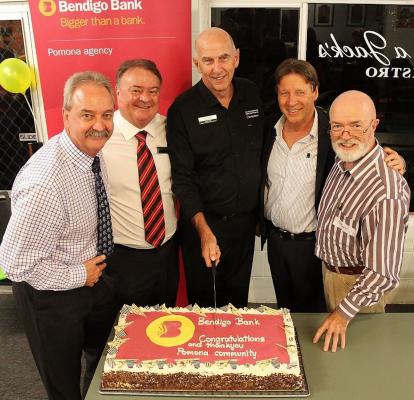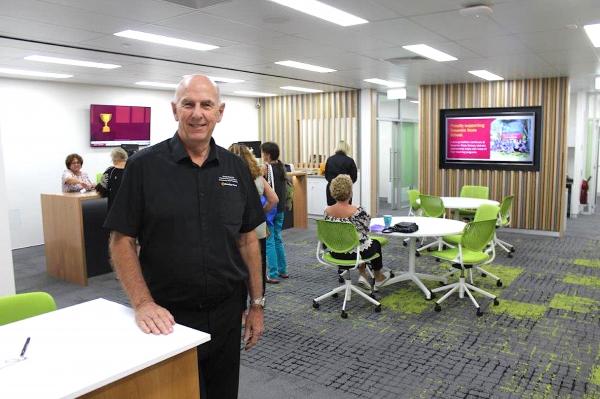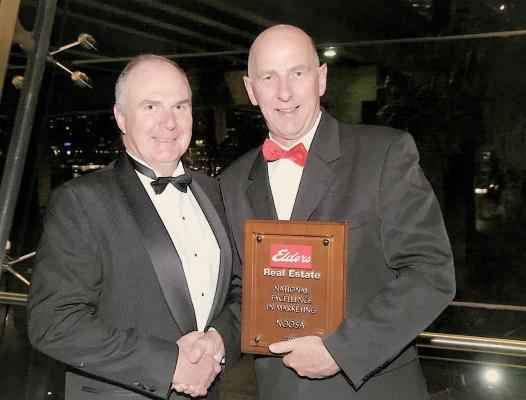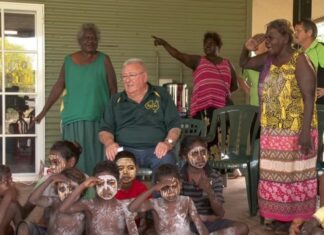Rick Cooper: you might not know him but you’ll recognize his picture.
He’s the tall, bald bloke beaming as he hands an over-sized cheque to a community group or a student scholarship winner. Often overlooked because he’s crunching the numbers in the boardroom while others are on the dais, the chairman of four Bendigo Banks in the region has put in the hard yards for his community for almost 30 years, and shows no signs of slowing down, having attained a few more years than his biblical quota and survived a recent health crisis.
A disclosure – Rick is a personal friend of this writer. We arrived in Noosa about the same time with young families, and although he was a bit more cashed up than me, after a successful career in Sydney with Qantas and in the computer industry when it was still about selling accounting systems to big business, he joined our team at Noosa Blue magazine as business director, more as a hobby than a new career path.
He recalls: “It was a fun thing to do and a great way to meet people. It seemed like we had a launch party for every issue, and with the Eumundi Brewing Company paying us in kind for its back page ad, it got pretty wild at times! That period helped open doors for me everywhere.”
Part of the Noosa sea-change plan was to live in a place where he could put more back into his community, so Rick soon got involved with the struggling Noosa District Tourism Committee. “It seemed like most of their funding came from chook raffles in those days,” he says. “I had some idle time so I joined the committee. I’d worked for Qantas in marketing for 10 years and thought I might be able to contribute a bit. The branding was all over the place, but once we got that organised, Noosa started to attract a different demographic and moved ahead on all levels, growing the resident population as well as tourism.”
This role led to him chairing the Noosa Community Tourism Board which was tasked with producing a 10-year plan for sustainable tourism. One of its major recommendations to council was that the industry fund itself through a tourism levy, a model still being used today, and one which resulted in the funding of events and long-overdue market research.
As a sidebar to his voluntary work on tourism, Rick also got involved in trying to find solutions for what, arguably, was (and remains) the industry’s biggest problem – traffic and parking. As a member of several community reference groups, including the mysteriously nick-named Red October Subcommittee, he helped introduce free buses during holiday peaks, a legacy of which he is proud, but would like to see become more sustainable.
Meanwhile, in the mid-‘90s, despite claiming to have left the corporate world behind, Rick bought the Tewantin Elders Real Estate franchise and created a thriving business of his own. Working on Poinciana Avenue every day, it was inevitable that he would be drawn into leading the Tewantin Community Association when it started in 2004, and in this role he became a front-liner in the fight against council amalgamation.
His shining moment came in July, 2007 when Labor local government minister Andrew Fraser explained to a meeting in Noosaville that the joining of Noosa, Maroochy and Caloundra councils was inevitable. Rick responded loudly: “To force a shotgun wedding on a partner that doesn’t want to be there would be absolutely doomed to failure.” Which it was, and the shotgun wedding became the go-to analogy throughout the doomed amalgamation.
Through the Tewantin Community Association, Rick became aware of a new community banking model that was keeping a bank in country towns when the big boys had pulled out. He says: “John Koenig, who had Bistro Bistro in Cooroy, first made us aware of the Bendigo Bank concept, which they’d introduced in Victoria in 1998. John was concerned that Cooroy would soon be without a local bank branch, and Tewantin was heading the same way. In those days if you lost your only bank, you lost your town’s economy, because you shopped where you banked. The idea was pretty simple, but it had never been done. Bendigo would partner with a community association and provide the banking services. The town kept its bank and the association distributed profits into the community. We decided to give it a go.”
Today there are more than 320 community-led Bendigo Bank branches across Australia, employing 1600 people and reinvesting more than $250 million into communities since the scheme began, $29 million of that in 2018-19, while Rick’s Sunshine Coast Community Services Ltd, which operates banks in Tewantin, Cooroy, Pomona and Marcoola, put more than $180,000 back into community projects and support in the same year. Over a decade of profitable turnover, SCCS has now reinvested more than $1.8 million. “And we’re just getting started,” says Rick. “We’re looking more now at the big ticket legacy projects, but I’m very proud of the role we’ve played in helping save events like Pomona’s King Of The Mountain and Noosa’s Long Weekend, as well as supporting groups as diverse as the arts and the Coastguard, and our education scholarships.”
While the big banks continue to run a mile from bricks and mortar in the age of internet banking, the Bendigo model is actually working, although it is being tweaked to accommodate new banking habits. Says Rick: “People want financial services in their town but ATM and over the counter transactions are falling, so over time there’ll be less demand for cash services and more for banking business. That’s our transformation model – to create a hub that integrates better with the community it serves, so at our Tewantin and Cooroy branches we’ve got meeting rooms, presentation areas and co-working spaces, as well as art space and even pop-up businesses. It’s a whole new world of customer experience. Our banks don’t even look like banks.
“The bottom line is that online banking is great for the simple stuff, but when it gets complex, you want to be able to talk to someone. We believe that’s a market that will be around for some time.”
But what about the chairman? “Well, I’m in my 70s now and I’m a prostate cancer survivor, but I’m a tough old bugger and I’m not easy to put down. I think I’ll know when the time comes to step down, and I’ll also know there’s plenty of talent coming up behind me.”











